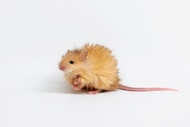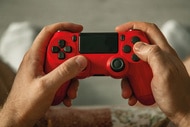MIT's manipulative new wearable dream tech induces odd nocturnal suggestions

Back in May we introduced you to MIT's new type of dream-tracking device called Dormio, in which subtle suggestions taken from the waking world were able to affect dreams of slumbering test subjects while they were in hypnagogia, a semi-lucid dream state that happens during the onset of sleep.
Now that Inception-like technology is being further refined and updated in a new paper published in last month's issue of the online journal Consciousness and Cognition. Researchers at MIT Media Lab's Fluid Interfaces, a think tank for devising and developing wearable systems and interfaces to boost cognitive skills, have employed a revolutionary technique they've named targeted dream incubation (TDI).
According to the August study, TDI presented precisely targeted information to a sleeping person, allowing direct incorporation of this data into the subject's dream content. These dreamy experiments were enacted by performing "serial awakenings" during a series of nap sessions utilizing 25 drowsy participants.
In rare instances of lucid dreaming, where the sleeper is consciously aware that a dream is occurring, dreamers use that awareness as a tool to help manipulate and shape the interactions and outcomes of their dream in a participatory capacity. TDI takes full advantage of the aforementioned hypnagogia condition, to achieve a facsimile of this steerable mindset.
Per lead study author Adam Haar Horowitz of MIT Media Lab's Fluid Interfaces Group, test subjects recorded specific audio prompts in an app, like "remember to think of a tree" or "remember to observe your thoughts," and then slowly settled down for a long summer's nap.
Hand-worn sleep trackers monitored heart rates, electrical variations on the skin surface, and the extent fingers curled or relaxed, in order to ascertain when a sleeper arrived at hypnagogia and entered a suggestible dreamscape. The team's Dormio sleep tracker communicated with the app and delivered interrupted audio cues at programmed times, then recorded audio of a person's dream recollections after they awoke.
"Simply put, people tell us whether the prompts appear in their dream," Horowitz explained. "Often, they are transformed — a 'tree' prompt becomes a tree-shaped car — but direct incorporation is easily identified."
Remarkably, 67% of the subjects' dream reports recalled variations of dreams that included a tree of some sort. Although a portion of dreaming happens during hypnagogia, the majority of dreams takes place during deeper and more intense rapid eye movement (REM) sleep. This interruption of hypnagogia allowed study authors to discover a secondary route for giving sleepers the ability to craft their dream content.
Tomás Vega is a former grad student researcher with MIT's Fluid Interfaces Group and the co-founder at Augmental Tech, a technology firm creating cognitive devices that integrate with the human body. Vega conjured up the circuitry and software that TDI uses to record biosignals.
In an odd test on his own slumbering brain, Vega strapped on the technology to implant a seeded suggestion about one of his favorite films, Willie Wonka and the Chocolate Factory, with an added audio cue of the movie's diminutive factory workers, the Oompa Loompas, belting out one of their memorable tunes.
"I started dreaming about being in a chocolate waterfall, surrounded by Oompa Loompas singing 'Oompa Loompa, doopity doo,'" the lactose intolerant Vega recalls. "It was a lactose-free waterfall. So, is my lactose-intolerance knowledge in my consciousness or in my subconscious? I induced this dream content, but there were still some constraints, like, 'You cannot just dream about milk chocolate because that's going to harm you.'"
While Horowitz admits that the intricate machinations that control sleep and dreaming remain a mystery, it's too early to discuss exactly how urging a dream's subject matter or details might actually be of a benefit to people. But Horowitz does see where its potential mental health applications could be extremely valuable in the future.
"Every benefit shown to be correlated to dreaming deserves an experiment on whether it can be causally shown to come from dreaming," Horowitz added. "This ranges from past work on nightmares and PTSD to current work on language learning in sleep, or creativity and eureka moments in dreams."





























